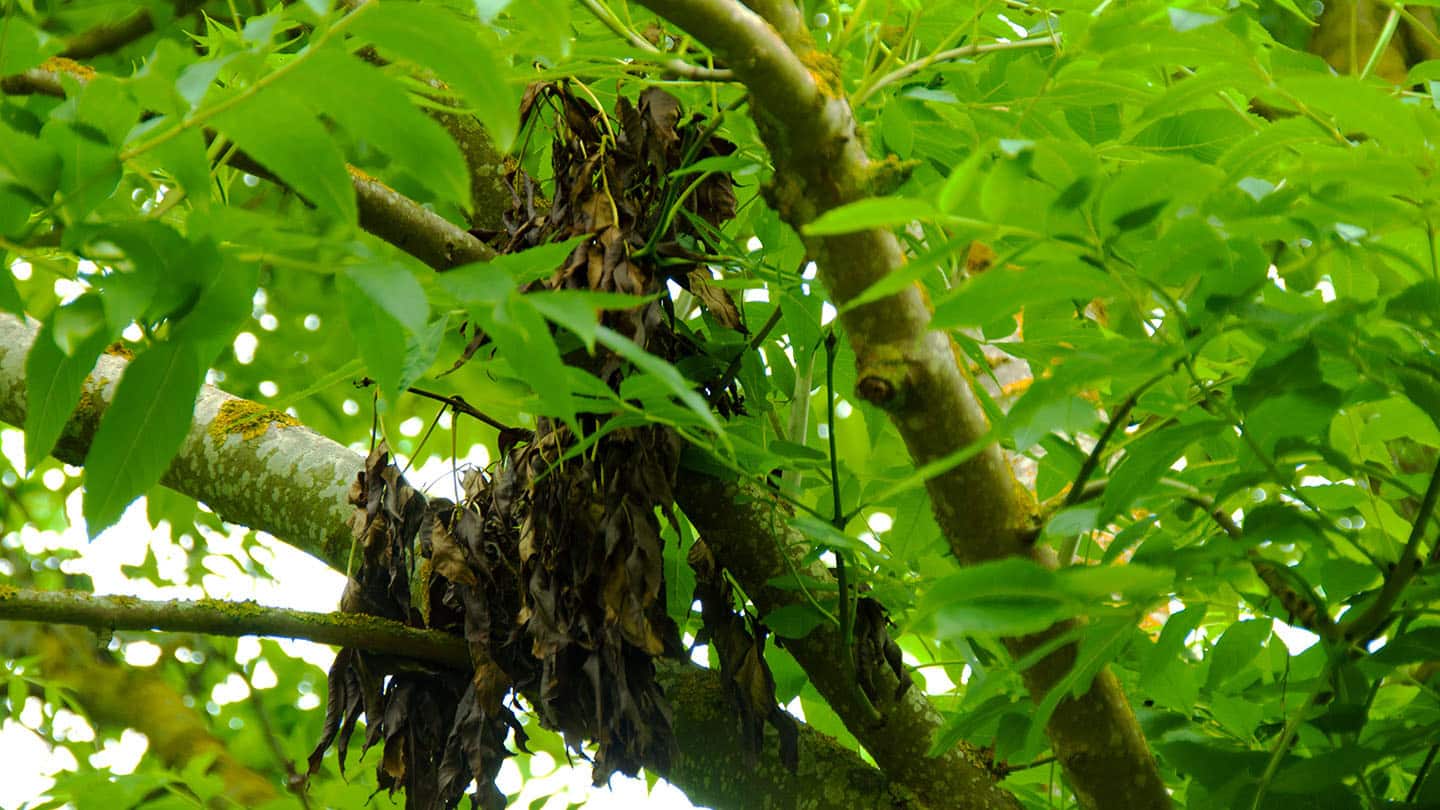
At St Hilda’s College, we are deeply committed to the thoughtful stewardship of the natural environments under our care. Radley Large Wood is a treasured space, valued both for its ecological importance and its role in our community. However, like many woodlands across the UK, it faces significant challenges due to the spread of ash dieback (ADB).
Since acquiring the wood, we have seen several instances of ash trees falling across paths or limbs damaging nearby properties, posing safety risks to the local community. Beyond these immediate hazards, ADB weakens trees, leaving them vulnerable to secondary infections and structural instability. Without intervention, the woodland’s overall health would have continued to decline, jeopardising its ability to support biodiversity and regenerate naturally.
Active management of woodlands can sometimes appear stark, particularly in areas that have previously seen minimal intervention. However, these measures are crucial for restoring ecological balance and ensuring the long-term health and resilience of the woodland. Left unmanaged, the combined effects of ADB and poor regeneration would have further degraded the habitat. By acting now, we are accelerating recovery through replanting and fostering the growth of diverse, resilient tree species.
Ash dieback is a serious and pervasive issue. Our management decisions have been guided by professional forestry consultants and the Forestry Commission (FC), both of whom have assessed the site and confirmed the presence of ADB. Where feasible, resistant ash trees have been retained. However, in wetter parts of the wood, fungal growth accelerates decay, making it impractical to adopt this approach universally. For safety reasons, the FC advises against hand-felling ash trees due to the risks posed by internal cavities, rot, and falling limbs, recommending mechanised removal instead. In healthier, drier sections of the wood, we have adopted a lighter, slower intervention strategy.
The mechanised removal of trees has caused some damage to the ground, but this will recover naturally over time. Planned remediation efforts include de-compacting the soil, removing remaining timber, and replanting with diverse native species to create a resilient and thriving woodland. Our management approach has been informed by extensive surveys and includes specific measures to minimise disruption to wildlife, such as carefully timing and tailoring the methods of tree felling.
We recognise that woodland management can stir strong emotions. Radley Large Wood is an essential part of our natural heritage, and our ultimate goal is to secure its health and vitality for future generations. By addressing immediate safety concerns, halting the spread of ADB, and implementing a robust replanting strategy, we aim to create a diverse and thriving woodland that benefits both wildlife and the community for generations to come.
We greatly value the continued engagement of those who care about Radley Large Wood. The passion and concern expressed in recent weeks are a testament to the importance of this woodland. We remain committed to demonstrating that we are responsible custodians and welcome ongoing dialogue as we work together to protect and nurture this cherished landscape.